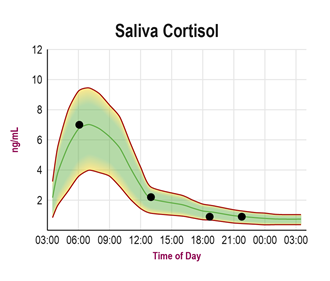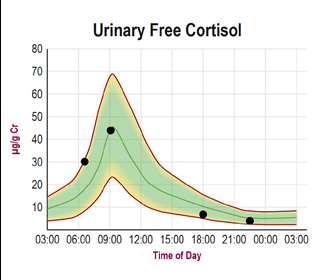Diurnal Cortisol Curves – Saliva vs Urine
Saliva testing has long been used as an accurate and reliable method for measuring cortisol because it’s simple and non-invasive, and patients can collect these samples multiple times per day.
A newer method that’s just as reliable as saliva testing has also been gaining ground – dried urine testing. Studies show that urine is just as effective for measuring cortisol levels, and it’s also simple enough for patients to collect multiple times per day.
One difference to note is that urinary cortisol output reflects an average of the time since the previous urine void (hours), while saliva provides an instantaneous assessment at the time saliva was collected (minutes). Therefore, the first morning urine collection is representative of overnight cortisol production. This is expected to be lower than the second urine collection, which, like the first saliva collection, should represent the peak of adrenal cortisol production in the early morning.
In a healthy individual cortisol in both saliva and urine tapers as the day progresses and reaches a nadir before bed at night. Diurnal patterns of cortisol synthesis are usually very similar when measured in saliva or urine.


Many ZRT saliva and saliva/blood spot combination profiles, as well as several dried urine profiles, include the diurnal cortisol curve. Just look for the Cx4 (cortisol x 4) indication in the profile. Download a complete list of profiles below.
Blog: Cortisol Testing in Saliva, Blood & Urine
Download: ZRT Overview of Kits

